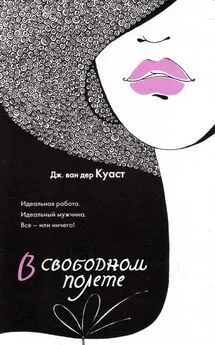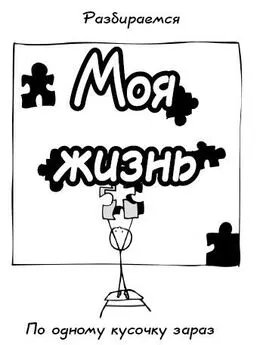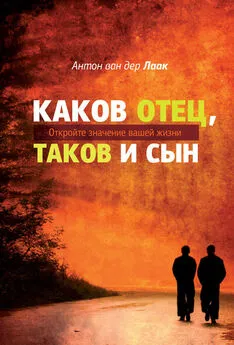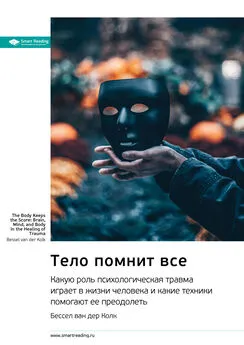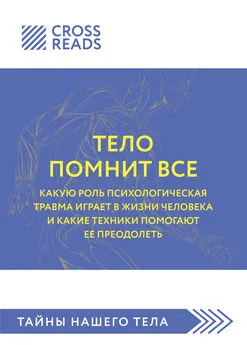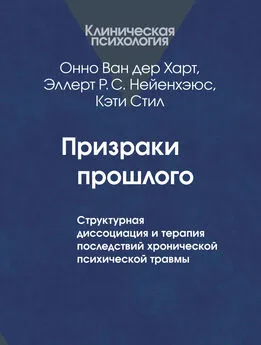Бессел ван дер Колк - Тело помнит все [Какую роль психологическая травма играет в жизни человека и какие техники помогают ее преодолеть]
- Название:Тело помнит все [Какую роль психологическая травма играет в жизни человека и какие техники помогают ее преодолеть]
- Автор:
- Жанр:
- Издательство:Литагент 5 редакция «БОМБОРА»
- Год:2019
- Город:Москва
- ISBN:978-5-04-099865-4
- Рейтинг:
- Избранное:Добавить в избранное
-
Отзывы:
-
Ваша оценка:
Бессел ван дер Колк - Тело помнит все [Какую роль психологическая травма играет в жизни человека и какие техники помогают ее преодолеть] краткое содержание
Доктор Бессел ван дер Колк, один из самых известных в мире специалистов по травме, провел более 30 лет, изучая посттравматическое стрессовое расстройство. Объединяя все исследования в области травмы, свой опыт и истории пациентов, в этой книге он объясняет, как травма буквально меняет тело и мозг, лишая переживших ее нормальной жизни, близких отношений и самоконтроля. Но есть и хорошие новости – автор расскажет, как мы можем помочь себе и своим близким в этой ситуации. Исследуя различные возможности исцеления: от медитации, йоги и спорта до занятий в театральных кружках – доктор Бессел предлагает новые пути к выздоровлению, активируя естественную нейропластичность мозга. Тем самым доктор дарит надежду на выздоровление и полноценную жизнь тем, кто столкнулся с травмой.
Внимание! Информация, содержащаяся в книге, не может служить заменой консультации врача. Перед совершением любых рекомендуемых действий необходимо проконсультироваться со специалистом.
Тело помнит все [Какую роль психологическая травма играет в жизни человека и какие техники помогают ее преодолеть] - читать онлайн бесплатно ознакомительный отрывок
Интервал:
Закладка:
7. J. Bowlby, A Secure Base: Parent-Child Attachment and Healthy Human Development (New York: Basic Books, 2008), 103.
8. B. A. van der Kolk, J. C. Perry, and J. L. Herman, “Childhood Origins of Self-Destructive Behavior”, American Journal of Psychiatry 148 (1991): 1665–71.
9. Эта идея получила дальнейшее подтверждение в работе нейробиолога по имени Яак Панксепп, который обнаружил, что у крысят, которых в первую неделю не вылизывала мать, не развивались опиоидные рецепторы передней поясной коры – участка мозга, связанного с формированием чувства защищенности. См.: E. E. Nelson and J. Panksepp, “Brain Substrates of Infant-Mother Attachment: Contributions of Opioids, Oxytocin, and Norepinephrine”, Neuroscience & Biobehavioral Reviews 22, no. 3 (1998): 437–52. См. также: J. Panksepp, et al., “Endogenous Opioids and Social Behavior”, Neuroscience & Biobehavioral Reviews 4, no. 4 (1981): 473–87; and J. Panksepp, E. Nelson, and S. Siviy, “Brain Opioids and Mother-Infant Social Motivation”, Acta paediatrica 83, no. 397 (1994): 40–46.
10. Делегация к Роберту Спитцеру также включала Джуди Герман, Джима Чу и Дэвида Пелкович.
11. B. A. van der Kolk, et al., “Disorders of Extreme Stress: The Empirical Foundation of a Complex Adaptation to Trauma”, Journal of Traumatic Stress 18, no. 5 (2005): 99. См. также: J. L. Herman, “Complex PTSD: A Syndrome in Survivors of Prolonged and Repeated Trauma”, Journal of Traumatic Stress 5, no. 3 (1992): 377–91; C. Zlotnick, et al., “The Long-Term Sequelae of Sexual Abuse: Support for a Complex Posttraumatic Stress Disorder”, Journal of Traumatic Stress 9, no. 2 (1996): 195–205; S. Roth, et al., “Complex PTSD in Victims Exposed to Sexual and Physical Abuse: Results from the DSM-IV Field Trial for Posttraumatic Stress Disorder”, Journal of Traumatic Stress 10, no. 4 (1997): 539–55; and D. Pelcovitz, et al., “Development and Validation of the Structured Interview for Measurement of Disorders of Extreme Stress”, Journal of Traumatic Stress 10 (1997): 3–16.
12. B. C. Stolbach, et al., “Complex Trauma Exposure and Symptoms in Urban Traumatized Children: A Preliminary Test of Proposed Criteria for Developmental Trauma Disorder”, Journal of Traumatic Stress 26, no. 4 (August 2013): 483–91.
13. B. A. van der Kolk, et al., “Dissociation, Somatization and Affect Dysregulation: The Complexity of Adaptation to Trauma”, American Journal of Psychiatry 153, suppl (1996): 83–93. См. также: D. G. Kilpatrick, et al., “Posttraumatic Stress Disorder Field Trial: Evaluation of the PTSD Construct-Criteria A Trough E”, in: DSM-IV Sourcebook , vol. 4 (Washington, DC: American Psychiatric Press, 1998), 803–44; T. Luxenberg, J. Spinazzola, and B. A. van der Kolk, “Complex Trauma and Disorders of Extreme Stress (DESNOS) Diagnosis, Part One: Assessment”, Directions in Psychiatry 21, no. 25 (2001): 373–92; and B. A. van der Kolk, et al., “Disorders of Extreme Stress: The Empirical Foundation of a Complex Adaptation to Trauma”, Journal of Traumatic Stress 18, no. 5 (2005): 389–99.
14. Эти вопросы доступны на сайте НДО: http://acestudy.org/
15. http://www.cdc.gov/ace/findings.htm; http://acestudy.org/download; V. Felitti, et al., “Relationship of Childhood Abuse and Household Dysfunction to Many of the Leading Causes of Death in Adults: The Adverse Childhood Experiences (ACE) Study”, American Journal of Preventive Medicine 14, no. 4 (1998): 245–58. См. также: R. Reading, “The Enduring Effects of Abuse and Related Adverse Experiences in Childhood: A Convergence of Evidence from Neurobiology and Epidemiology”, Child: Care, Health and Development 32, no. 2 (2006): 253–56; V. J. Edwards, et al., “Experiencing Multiple Forms of Childhood Maltreatment and Adult Mental Health: Results from the Adverse Childhood Experiences (ACE) Study”, American Journal of Psychiatry 160, no. 8 (2003): 1453–60; S. R. Dube, et al., “Adverse Childhood Experiences and Personal Alcohol Abuse as an Adult”, Addictive Behaviors 27, no. 5 (2002): 713–25; S. R. Dube, et al., “Childhood Abuse, Neglect, and Household Dysfunction and the Risk of Illicit Drug Use: The Adverse Childhood Experiences Study”, Pediatrics 111, no. 3 (2003): 564–72.
16. S. A. Strassels, “Economic Burden of Prescription Opioid Misuse and Abuse”, Journal of Managed Care Pharmacy 15, no. 7 (2009): 556–62.
17. C. B. Nemerof, et al., “Differential Responses to Psychotherapy Versus Pharmacotherapy in Patients with Chronic Forms of Major Depression and Childhood Trauma”, Proceedings of the National Academy of Sciences of the United States America 100, no. 24 (2003): 14293–96. См. также: C. Heim, P. M. Plotsky, and C. B. Nemerof, “Importance of Studying the Contributions of Early Adverse Experience to Neurobiological Findings in Depression”, Neuropsychopharmacology 29, no. 4 (2004): 641–48.
18. B. E. Carlson, “Adolescent Observers of Marital Violence”, Journal of Family Violence 5, no. 4 (1990): 285–99. См. также: B. E. Carlson, “Children’s Observations of Interparental Violence”, in Battered Women and Their Families , ed. A. R. Roberts (New York: Springer, 1984), 147–67; J. L. Edleson, “Children’s Witnessing of Adult Domes-tic Violence”, Journal of Interpersonal Violence 14, no. 8 (1999): 839–70; K. Henning, et al., “Long-Term Psychological and Social Impact of Witnessing Physical conflict Between Parents”, Journal of Interpersonal Violence 11, no. 1 (1996): 35–51; E. N. Jouriles, C. M. Murphy, and D. O’Leary, “Interpersonal Aggression, Marital Discord, and Child Problems”, Journal of Consulting and Clinical Psychology 57, no. 3 (1989): 453–55; J. R. Kolko, E. H. Blakely, and D. Engelman, “Children Who Witness Domes-tic Violence: A Review of Empirical Literature”, Journal of Interpersonal Violence 11, no. 2 (1996): 281–93; and J. Wolak and D. Finkelhor, “Children Exposed to Partner Violence”, in Partner Violence: A Comprehensive Review of 20 Years of Research , ed. J. L. Jasinski and L. Williams (Tousand Oaks, CA: Sage, 1998).
19. Большинство из этих заявлений основаны на разговорах с Винсентом Фелитти и дополнены Дж. Е. Стивенсом, “The Adverse Childhood Experiences Study-the Largest Public Health Study You Never Heard Of”, Huffington Post , October 8, 2012, http://www.huffingtonpost.com/jane-ellen-stevens/the-adverse-childhood-exp_1_b_1943647.html
20. Характерный для популяции риск: часть общей популяции, чьи проблемы могут быть объяснены определенными факторами риска.
21. National Cancer Institute, “Nearly 800,000 Deaths Prevented Due to Declines in Smoking” (press release), 14 марта 2012, доступно по ссылке:
http://www.cancer.gov/newscenter/newsfromnci/2012/TobaccoControlCISNET
Глава 10. Травма развития: скрытая эпидемия
1. Эти случаи были частью исследования, проведенного совместно Джулианом Фордом, Джозефом Спинаццолой и мной.
2. H. J. Williams, M. J. Owen, and M. C. O’Donovan, “Schizophrenia Genetics: New Insights from New Approaches”, British Medical Bulletin 91 (2009): 61–74. См. Также: P. V. Gejman, A. R. Sanders, and K. S. Kendler, “Genetics of Schizophrenia: New Findings and Challenges”, Annual Review of Genomics and Human Genetics 12 (2011): 121–44; and A. Sanders, et al., “No Significant Association of 14 Candidate Genes with Schizophrenia in a Large European Ancestry Sample: Implications for Psychiatric Genetics”, American Journal of Psychiatry 165, no. 4 (April 2008): 497–506.
3. R. Yehuda, et al., “Putative Biological Mechanisms for the Association Between Early Life Adversity and the Subsequent Development of PTSD”, Psychopharmacology 212, no. 3 (October 2010): 405–17; K. C. Koenen, “Genetics of Posttraumatic Stress Disorder: Review and Recommendations for Future Studies”, Journal of Traumatic Stress 20, no. 5 (October 2007): 737–50; M. W. Gilbertson, et al., “Smaller Hippocampal Volume Predicts Pathologic Vulnerability to Psychological Trauma”, Nature Neuroscience 5 (2002): 1242–47.
4. Koenen, “Genetics of Posttraumatic Stress Disorder”. См. также: R. F. P. Broekman, M. Olf, and F. Boer, “The Genetic Background to PTSD”, Neuroscience & Biobehavioral Reviews 31, no. 3 (2007): 348–62.
5. M. J. Meaney and A. C. Ferguson-Smith, “Epigenetic Regulation of the Neural Transcriptome: The Meaning of the Marks”, Nature Neuroscience 13, no. 11 (2010): 1313–18. См. также: M. J. Meaney, “Epigenetics and the Biological Definition of Gene × Environment Interactions”, Child Development 81, no. 1 (2010): 41–79; and B. M. Lester, et al., “Behavioral Epigenetics”, Annals of the New York Academy of Sciences 1226, no. 1 (2011): 14–33.
6. M. Szyf, “The Early Life Social Environment and DNA Methylation: DNA Methylation Mediating the Long-Term Impact of Social Environments Early in Life”, Epigenetics 6, no. 8 (2011): 971–78.
7. Moshe Szyf, Patrick McGowan, and Michael J. Meaney, “The Social Environment and the Epigenome”, Environmental and Molecular Mutagenesis 49, no. 1 (2008): 46–60.
8. На данный момент имеется огромное количество подтверждений того, что всевозможный жизненный опыт может менять экспрессию генов. Вот несколько примеров: D. Mehta et al., “Childhood Maltreatment Is Associated with Distinct Genomic and Epigenetic Profiles in Posttraumatic Stress Disorder”, Proceedings of the National Academy of Sciences of the United States of America 110, no. 20 (2013): 8302–7; P. O. McGowan, et al., “Epigenetic Regulation of the Glucocorticoid Receptor in Human Brain Associates with Childhood Abuse”, Nature Neuroscience 12, no. 3 (2009): 342–48; M. N. Davies, et al., “Functional Annotation of the Human Brain Methylome Identifies Tissue-Specifc Epigenetic Variation Across Brain and Blood”, Genome Biology 13, no. 6 (2012): R43; M. Gunnar and K. Quevedo, “The Neurobiology of Stress and Development”, Annual Review of Psychology 58 (2007): 145–73; A. Sommershof, et al., “Substantial Reduction of Naive and Regulatory T Cells Following Traumatic Stress”, Brain, Behavior, and Immunity 23, no. 8 (2009): 1117–24; N. Provençal, et al., “The Signature of Maternal Rearing in the Methylome in Rhesus Macaque Prefrontal Cortex and T Cells”, Journal of Neuroscience 32, no. 44 (2012): 15626–42; B. Labonté, et al., “Genome-wide Epigenetic Regulation by Early-Life Trauma”, Archives of General Psychiatry 69, no. 7 (2012): 722–31; A. K. Smith, et al., “Differential Immune System DNA Methylation and Cytokine Regulation in Post-traumatic Stress Disorder ”, American Journal of Medical Genetics Part B: Neuropsychiatric Genetics 156B, no. 6 (2011): 700–8; M. Uddin, et al., “Epigenetic and Immune Function Profiles Associated with Posttraumatic Stress Disorder”, Proceedings of the National Academy of Sciences of the United States of America 107, no. 20 (2010): 9470–75.
Читать дальшеИнтервал:
Закладка:
![Обложка книги Бессел ван дер Колк - Тело помнит все [Какую роль психологическая травма играет в жизни человека и какие техники помогают ее преодолеть]](/books/1065979/bessel-van-der-kolk-telo-pomnit-vse-kakuyu-rol-ps.webp)

